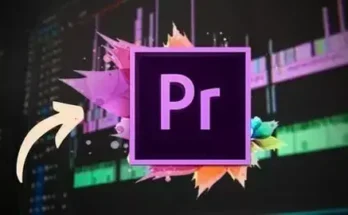Cubase Rapid Music Production TUTORiAL
MP4 | Video: h264, 1280×720 | Audio: AAC, 44.1 KHz
Language: English | Size: 5.70 GB | Duration: 6h 41m
Use MediaBay, Groove Agent, Chord Tracks, Arranger Tracks and Sampler Tracks to compose, edit and arrange modern tracks.
What you’ll learn
Produce Music Rapidly in Multiple Genres
Generate Automatic Drum Parts with Groove Agent SE
Quickly Compose, Arrange & Mix
Conform MIDI with Chord Track Instantly
Use Cubase as a Creative “Sandbox”
Make Sampled Instruments in Sampler Tracks
Follow 3 Different Case Studies
Requirements
Mac or PC
Cubase Pro 10.5 (recommended)
Experience with audio editing and mixing is recommended
Motivated learners with an open mind to new features 🙂
Description
This course is for beginners and intermediate home-engineers and producers who want to develop an extended skill set with Cubase. Specifically, this course includes training for:MediaBayGroove Agent SEChord TrackArranger TrackSampler TrackThis course will show you exactly how to use the features in a practical way in your Cubase productions. Learning to use these features will speed up your workflow, make your productions more professional and allow you to get a lot more creative in the studio.If you’ve upgraded Cubase (or you’re a new user) and you’ve never learned to use these tools because they might appear confusing or unhelpful, then you are going to undoubtedly benefit from the lessons in this course! Get to know these tools and you’ll never go back :)Organize Cubase with MediaBayMediaBay is one of the first tools that Cubase users overlook. But, here’s a few of the reasons why everyone (no matter what styles of music you’re making) should learn to set it up and use it correctly:First, MediaBay brings everything under one roof. You may be looking for a sample and happen across a loop that you didn’t know you had (or forgot :). Since MediaBay can track enormous amounts of different kinds of content, it is one of the best available tools for your file management… and it comes built-in – for FREE!Next, MediaBay encourages producers to get organized. In this course I’ll offer some tips for tagging and organizing your loops, samples and presets in bulk using the attribute inspector (a tool which doesn’t even show up by default). How much time it takes to organize your content will be different for each student (depending on their library). Nonetheless, getting organized will help EVERY producer stay creative.The MediaBay not only keeps you organized, it can play back loops in the context of your project… before you even drag it in! This means you can listen to thousands of options IN CONTEXT before you decide to add it to your project. It will follow the tempo, key and even start and stop with the main transport.Demystify Groove Agent… FINALLY!I’ve encountered many producers who let Groove Agent SE sit in their VST collection for ages without really using it. For some, it is because they don’t need a drum machine (however, it is also a pretty powerful sampler!). For others, it is because they don’t “get” it – I’ll be the first to admit the user interface obscures the incredible power and flexibility of Groove Agent. Here are a few of the things you’ll probably start doing once you’ve taken this course:Have you ever wanted to compose an original drum track that sounds and feels like a human being actually played it? Of course you have – we ALL have. Groove Agent can do that easily… once you know how to use it. It’s actually pretty easy and there are so many styles and kit choices to mix and match that (with the help of the attribute search) you’ll find something for any project.Are you a sampling fiend and you frustrated that the Sampler Track won’t permit layered sampling? Well, Groove Agent SE does! Furthermore, you can just migrate any Sampler Track (envelopes and all) to a pad in Groove Agent with the click of your mouse!Do you like the “idea” of a drum machine, but find it too fiddly to record the parts and get them into your project? Well, Groove Agents patterns can just be dragged into your project – right from Groove Agent. You don’t have to route MIDI and hit record (although you can if you want :).Do you wish you could freshen up your beats with fills and different types of complexity without having to manually tweak MIDI clips for days on end? Me too! That is why I use Groove Agent SE’s Auto-Fill and Auto-Complexity modes to ensure that my drum parts sound and feel like they were actually played live. I can have my drum part finished (from scratch) in just a few minutes – human, well-mixed, professionally sampled – I’ll show you how to do this and more…Up Your Game & Write Better Chord Progressions…The Chord Track has been around for a while, but it is under-recognized as a tool for every producer to be using! Not only will the Chord Track refine your harmonic skills, but it will allow you to work more flexibly with your MIDI – even reharmonizing MIDI that you’ve already recorded! Here are some of the highlights from the Chord Track lessons in this course:For producers who need some help generating ideas for harmony and chord progressions, the Chord Assistant feature comes to the rescue. I’ll show you how to identify complete chord progressions as well as finding chords that work well with the chord before/after any specific chord in your progression. You can use the Chord Assistant to explore different options based on “musical proximity” and make writing chords fun!Discover the Live Transform feature which enables you to play a pattern on your MIDI keyboard that the Chord Track will “transform” in real time to match the chords in your chord progression. This is the best of both worlds – play the chords you want, even if you aren’t a piano player (or your using a non-keyboard MIDI controller).Did you know that you can extract chords from an existing MIDI part and create a Chord Track automatically? This only takes a few clicks to turn a MIDI recording into a Chord Track. We’ll go over this step-by-step with a MIDI clip from Amazing Grace. You’ll see how easy it is and then you’ll start wondering why this isn’t bigger news :)One of the most valuable tricks in the Chord Track section is all about conforming MIDI parts (that are already recorded – like MIDI loops in MediaBay). With a few clicks, you can transform the MIDI to follow your chord track while keeping the original MIDI part’s timing and performance nuances. Imagine that you record a piano player as MIDI. Then, a week later you decide to change one of the chords they played… Yep, that’s actually easier than you might think…Arrange, Re-Arrange, RepeatThis course includes a full guide to the Arranger Track – a paradigm-shifting approach to composing. This tool allows us to craft song sections (verse, chorus, drop, breakdown, etc.) and then tell Cubase how to plug them all together into a final production. The implications of this tool are massive and include the following scenarios:Many producers have musical ideas that they want to use over and over. This workflow meant copying and pasting… until now. Some of the real-world uses for the non-linear compositional approach include:Transition FXAutomation SnippetsChord ProgressionsMulti-part MIDI HarmoniesIf you’re a fan of Ableton Live’s session view and scenes for live performance, then you should check out the Arranger Track which can operate live to play arrangement sections (exactly like Ableton Scenes). You can even bind them to keyboard commands and trigger your multitrack Cubase arrangement remotely on stage.Not sure what the perfect arrangement of you track would be? How many choruses should we have? What will this bridge sound like in different keys? With the Arranger Track, you simply build your section and “Flatten” out as many projects as your heart desires. This is a powerful ally in the search for the perfect arrangement!Sampling Made Simple and PlayableCubase includes a dedicated track type that runs a simple, but powerful sampler – including loop modes, crossfades, pitch/filter/amp envelopes and much more. Sometimes you don’t have the instrument you want… now you can make it on your own. Some highlights from the Sampler Track section include:If you’re a fan of Ableton’s Simpler, then you’ll recognize how all the features of the Sampler Track work. It is easy enough for newbies to use, but powerful enough to make great sampled instruments. We’ll talk about instrument design, use cases for envelopes and filtering.Want to learn sampling? That is a great idea – Cubase contains a very broad collection of Sampler Track presets that you can pick apart, analyze and learn from. It’s like going to school for sampling (if you’re into that sort of thing :).While the sampling tools are powerful, the ability to treat a Sampler Track as an Instrument Track – like having a mixer fader, channel strip, inserts and sends – makes the Sampler Track intuitive. If sampling isn’t your thing, then simply load up one of the awesome presets and just use it like you would a Halion Sonic patch :). There’s very little investment, but also an awesome return. Have fun!More Than a WalkthroughWhile many courses focus on feature walkthroughs of software, this course concludes with not 1, but 3 case studies. Each case study builds a full track (rhythm, harmony, FX and mixing) in one of 3 specific (and totally unrelated) genres: Jazz, EDM and Rock. I’ve used Cubase for more than 15 years in both professional and personal projects I share my process and tips in these unique case studies to help you apply what you’ve learned in the first several sections of the course.From searching MediaBay to Maximizing your finished track, each case study comes with 2 projects:An arranger project – containing all the tracks and the arranger sections that we build throughout the case study.A final stems project – containing the version of the arranger track that we “flattened”.Of course, you’re always free to open the arranger project for each case study, make tweaks and “flatten” out your own original take. Helpful Quizzes & AssignmentsMany sections contain both a quiz and an assignment designed to help every student consolidate what they learn and provide a way to apply that knowledge in Cubase using the tools that we discuss throughout the course. There is a lot of overlap – so as the course moves along, so does the complexity of our creative work. For example, we’ll use the Sampler Track in our Jazz case study, while we incorporate arpeggiators to enhance our EDM track. The use of Beat Designer in conjunction with Groove Agent is another great example of how we explore features in Cubase that are practical and actionable. The quiz will test your knowledge, while the assignments will get you applying what you’ve learned in a real-world context.If you suspect that Cubase offers more than you know… you’re probably right :). Cubase is a very deep DAW with powerful features that pros (like Hans Zimmer, Zedd, Paul McCartney, Kraftwerk, Glitch Mob, Meshuggah, New Order and Tiesto) use every day to produce. This course will expand your knowledge of these features and inspire you to get creative. I look forward to seeing you in the course!
Overview
Section 1: Introduction
Lecture 1 Introduction
Lecture 2 Commitment to Creativity
Lecture 3 Tips for This Course
Section 2: Optimizing MediaBay Workflow
Lecture 4 Customizing MediaBay
Lecture 5 Troubleshooting MediaBay
Lecture 6 Attribute Inspector
Lecture 7 Searching MediaBay
Lecture 8 Customizing Search Results
Lecture 9 Demo Workflow
Lecture 10 Syncing & Assembly
Lecture 11 Wrap-Up
Section 3: Demystifying Groove Agent SE
Lecture 12 Overview
Lecture 13 Getting Around Groove Agent
Lecture 14 Managing Factory & User Kits
Lecture 15 Patterns & Auto Drummer
Lecture 16 Slicing Your Own Kit
Lecture 17 Building Sampled Kits
Lecture 18 MIDI Troubleshooting
Lecture 19 Wrap-Up & Project
Section 4: Mastering Chord Tracks
Lecture 20 Understanding Chord Tracks
Lecture 21 Using Chord Editor
Lecture 22 Using Chord Assistant
Lecture 23 Chords and Instruments
Lecture 24 Live Transform
Lecture 25 Understanding Voicings
Lecture 26 Conforming MIDI
Lecture 27 Extract Chord Track
Lecture 28 Tips, Tricks & Workflow
Lecture 29 Wrap-Up & Project
Section 5: Dynamic Arrangements
Lecture 30 Getting Started with Arranger Tracks
Lecture 31 Arranger Events
Lecture 32 Arranger Editor
Lecture 33 Arranger Chains
Lecture 34 Arrangements Automation
Lecture 35 Chord Track Arrangement
Lecture 36 Live Arrangements
Lecture 37 Flattening Arrangements
Lecture 38 Wrap-Up & Project
Section 6: Creating with Sampler Track
Lecture 39 Getting Oriented
Lecture 40 Where to Start
Lecture 41 Instrument Design
Lecture 42 Customizing Instruments Pt. 1
Lecture 43 Customizing Instruments Pt. 2
Lecture 44 Shaping Samples
Lecture 45 Multi-Sampling
Lecture 46 Creativity Revisited
Lecture 47 Wrap-Up & Project
Section 7: Rapid Jazz Production Case Study
Lecture 48 A Jazz Foundation
Lecture 49 Rapid Arrangement
Lecture 50 Creating Your Harmony
Lecture 51 Customizing the Drums
Lecture 52 Reinforced Bass
Lecture 53 Conforming MIDI
Lecture 54 Finalizing Arrangement
Lecture 55 Adding Automation
Lecture 56 Mixing
Lecture 57 Pre-Mastering & Export
Lecture 58 Wrap-Up & Project
Section 8: Rapid EDM Production Case Study
Lecture 59 Getting Started
Lecture 60 Rapid Arrangement
Lecture 61 The Chord Progression
Lecture 62 Beat Designer
Lecture 63 Building a Kick
Lecture 64 Random Snare
Lecture 65 Synth Arranging
Lecture 66 Following Chords
Lecture 67 Transitions & Automation
Lecture 68 Mixing
Lecture 69 Wrap-Up & Project
Section 9: Rapid Rock Production Case Study
Lecture 70 Rapid Arrangement
Lecture 71 Finding Grooves
Lecture 72 Bass & Guitars
Lecture 73 Finalize Arrangement
Lecture 74 Polishing & Mixing Pt. 1
Lecture 75 Polishing & Mixing Pt. 2
Lecture 76 Pre-Mastering & Expot
Lecture 77 Wrap-Up & Project
Section 10: Conclusion
Lecture 78 *Bonus Lecture
This course is perfect for owners of Cubase who produce music regularly and feel like you’re not using Cubase’s full toolset effectively to produce and stay inspired.,New Cubase users looking to learn the tools, tips and tricks essential to Cubase.
Please REPORT in Comment Broken Links




